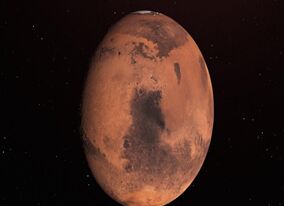研究发现月球正在生锈
|
study: the moon is rusting The moon is turning red, and it's likely Earth's fault. Our planet's atmosphere may be causing the moon to rust, new research finds.
Rust, also known as iron oxide, is a reddish compound that forms when iron is exposed to water and oxygen. But not all celestial environments are optimal for rusting, especially our dry, atmosphere-free moon. "It's very puzzling," the study's lead author, Shuai Li of the University of Hawaii, said in a statement. "The moon is a terrible environment for [rust] to form in." Li was studying data from the JPL Moon Mineralogy Mapper when he realized that the poles of the moon had very different compositions from the rest of it. He found that the moon's polar surfaces had iron-rich rocks with spectral signatures that matched that of hematite. The mineral hematite, commonly found in Earth's surface, is a specific type of iron oxide, or rust, with the formula Fe2O3. "At first, I totally didn't believe it. It shouldn't exist based on the conditions present on the moon," said co-author Abigail Fraeman, a planetary geoscientist at JPL. "But since we discovered water on the moon, people have been speculating that there could be a greater variety of minerals than we realize if that water had reacted with rocks." The moon doesn't have an atmosphere of its own to provide sufficient amounts of oxygen, but it has trace amounts donated by Earth's atmosphere. This terrestrial oxygen travels to the moon along an elongated extension of the planet's magnetic field called a "magnetotail." Earth's magnetotail can reach all the way to the near side of the moon, where more of the hematite was found, according to the statement. |









